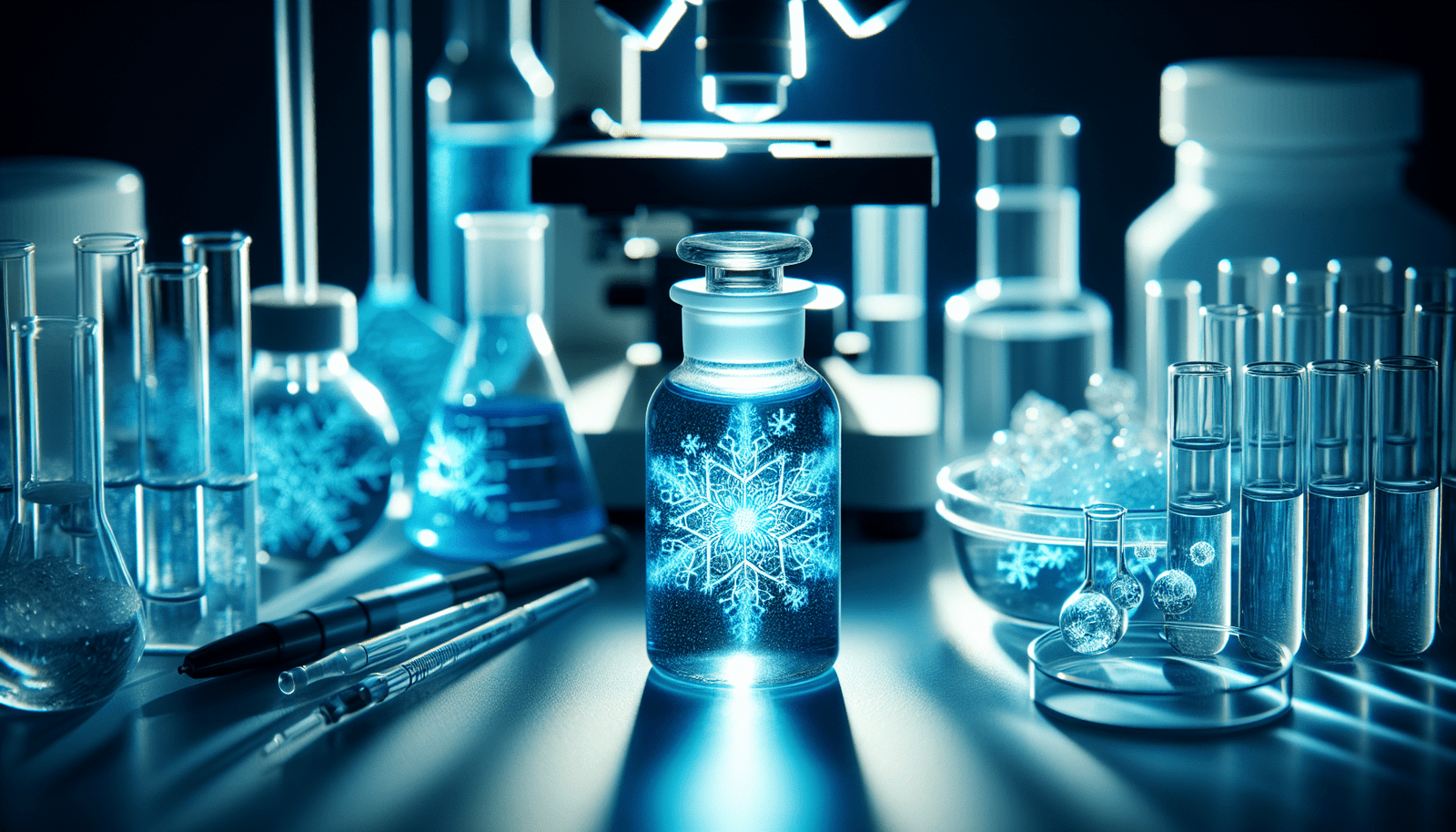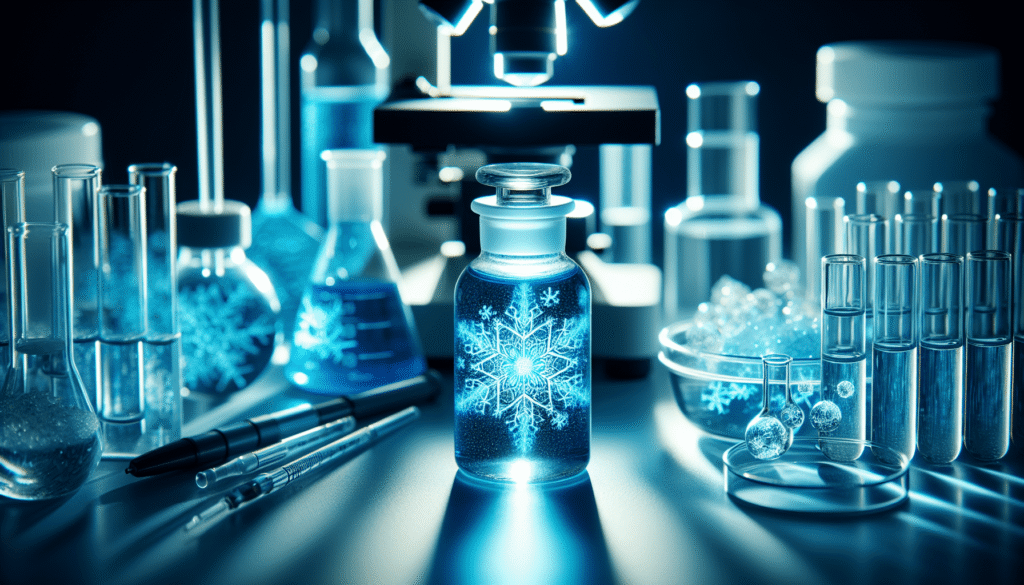
What if a single compound could change the way you perceive cell structures and functions in a biology laboratory? Methylene blue may well be that compound, playing a pivotal role in various biological applications and studies. This article aims to provide an in-depth understanding of the significance of methylene blue in biology labs, including its history, applications, mechanisms of action, and safety considerations.

The History of Methylene Blue
Methylene blue was first synthesized in 1876 by Heinrich Caro, originally designed as a dye for textiles. It was later identified for its biological properties. Its initial application in medicine was as an antiseptic, particularly for treating malaria due to its ability to affect the hemoglobin of the malaria parasite. Over time, researchers recognized its potential in various laboratory settings, further expanding its utility in biological sciences.
Early Use and Development
The development of methylene blue was groundbreaking in the field of microbiology. It provided a method for staining bacteria, allowing scientists to observe and differentiate between various cell types. As a histological stain, methylene blue enabled improved visibility of cellular structures through microscopic examination, becoming a staple in biology labs worldwide.
Transition to Modern Applications
Fast forward to the 20th century, methylene blue has evolved beyond a simple dye. Its role in biochemistry and molecular biology illustrates how initial discoveries can pivot into broader applications. While methylene blue still serves as a crucial tool in microscopy, its functionalities have expanded into modern research realms, including neuroscience and pharmacology.
Mechanisms of Action
Understanding how methylene blue works is essential when considering its applications in the lab. It operates primarily through two mechanisms: as a redox compound and as a fluorescent dye.
Redox Properties
Methylene blue exists in two forms: oxidized (blue) and reduced (colorless). This redox capability allows it to participate in various biochemical reactions, particularly in cellular respiration studies. By serving as an electron acceptor, methylene blue aids in the assessment of metabolic activity within cells.
This electron transfer is crucial in the context of various experiments, enabling researchers to quantify cellular respiration rates by measuring changes in dye absorption over time. This characteristic leads to valuable insights into metabolic states across different cellular environments.
Fluorescence and Staining
In addition to its redox capabilities, methylene blue exhibits fluorescence under ultraviolet light. This property is particularly useful in microscopy, where it stains cellular structures, making them visible under specific lighting conditions. Methylene blue is often used to stain nuclei, providing clear delineation of cell structures.
This dual capability—acting as both a redox indicator and a fluorescent dye—highlights the versatility of methylene blue in lab settings. It ensures that the compound remains an invaluable resource for researchers studying cellular dynamics.
Applications in Biology Labs
Methylene blue serves various purposes in biology labs, including but not limited to staining, microscopy, and therapeutic applications. Each category highlights a different aspect of its utility.
Staining and Microscopy
One of the primary applications of methylene blue is in staining techniques. It is prevalent in preparing slides for microscopy, allowing detailed visualization of cellular components.
Advantages of Methylene Blue Staining
- Enhanced Contrast: Methylene blue provides excellent contrast against colorless backgrounds, making it easier to distinguish cell structures.
- Specificity: The compound preferentially stains particular cellular components, such as nuclei and certain organelles, allowing for targeted studies.
- Cost-Effectiveness: Compared to other staining agents, methylene blue is relatively inexpensive and widely available, making it an accessible option for educational and research laboratories.
Comparison of Staining Techniques
| Staining Method | Advantages | Limitations |
|---|---|---|
| Methylene Blue | Cost-effective, clear visualization | Limited to certain cell types |
| Gram Staining | Differentiates gram-positive/negative bacteria | More complex procedure |
| Giemsa Staining | Suitable for blood smears | Requires multiple reagents and steps |
| Hematoxylin and Eosin | General tissue staining | Less specific for cellular structures |
Methylene blue is particularly useful in studies involving blood, as it provides insight into cell morphology and can aid in diagnosing various hematological conditions.
Cellular Respiration Studies
In addition to microscopy, methylene blue serves as a tool for studying cellular respiration. By evaluating how methylene blue affects oxygen utilization in various organisms, researchers can better understand metabolic pathways.
Utilizing Methylene Blue in Respiration Studies
The process typically involves adding methylene blue to a cellular suspension and monitoring changes in the absorbance spectrum over time. A decrease in blue coloration indicates cellular respiration occurring, as cells reduce the dye, showcasing their metabolic activity.
Methylene blue’s ability to facilitate such experiments underscores its role in providing insights into the broader metabolic processes within living organisms.
Neurobiology and Therapeutic Applications
Methylene blue has attracted attention for its applications in neurobiology. It’s been studied for its potential neuroprotective and cognitive-enhancing effects.
Neuroprotective Effects
Research suggests that methylene blue exerts protective qualities against oxidative stress, a common pathway for neurodegenerative diseases. The compound’s antioxidant properties may aid in reducing cell death in neuronal populations, making it a candidate for therapeutic evaluation in conditions like Alzheimer’s disease.
Cognitive Enhancement
In lower doses, methylene blue has shown potential in enhancing cognitive functions and memory processes. Studies suggest that it might improve mitochondrial function and efficacy, which are essential in energy production for neural cells.
Antimicrobial Properties
Methylene blue possesses inherent antimicrobial qualities, contributing to its use in biomedical applications. Its ability to interrupt bacterial cellular processes makes it a candidate for treating infections.
Mechanism of Antimicrobial Action
Methylene blue interacts with bacterial membranes and cellular components, disrupting electron transport chains and triggering oxidative damage. This action may promote bacterial cell death, providing a viable alternative treatment for multidrug-resistant organisms.
Preparation and Use of Methylene Blue
Correct preparation and usage of methylene blue are imperative for achieving reliable results in laboratory settings. Follow these guidelines to ensure effective application.
Preparing Methylene Blue Solutions
Dilution Procedure
- Start with a stock solution of methylene blue, typically around 1% concentration.
- Dilute the stock solution with distilled water to the desired working concentration, usually ranging from 0.01% to 0.1% for most applications.
- Gently mix the solution to ensure homogeneity.
Ensure to use gloves and protective eyewear during the preparation to handle methylene blue safely.
Proper Application Techniques
Microscopy Application
- Prepare the sample slide by placing a small drop of the methylene blue solution on the specimen.
- Cover the specimen with a coverslip to prevent contamination and evaporation.
- Observe under the microscope at varying magnifications, starting from low to high power.
Safety and Handling Considerations
Despite its beneficial properties, handling methylene blue requires caution.
Hazards Associated with Methylene Blue
- Methylene blue can irritate skin and eyes; hence personal protective equipment is essential during manipulation.
- Ingestion or inhalation can be harmful, necessitating adherence to safety protocols.
Waste Disposal
Methylene blue should be disposed of as per local hazardous waste guidelines. Ensure to contain any spills and follow institutional protocols for disposal.

Conclusion
Understanding methylene blue’s multifaceted role in biology labs not only contributes to your knowledge base but also enhances the quality and effectiveness of laboratory outcomes. From staining techniques that illuminate cellular structures to its emerging applications in neurobiology and antimicrobial therapies, methylene blue remains a cornerstone in biological research. Adhering to preparation, safety, and application protocols ensures that you can maximize the compound’s potential while minimizing risks.
Methylene blue is more than just a dye; it’s a powerful tool that can unlock new insights into cellular function and disease mechanisms. As research in the biological sciences continues to advance, the importance of compounds like methylene blue cannot be overstated. Embrace these applications and consider the broader implications of your work—far beyond the immediate results, extending into an understanding of life itself.